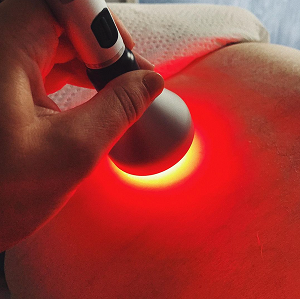Photobiomodulation Studies on PubMed
PubMed® comprises more than 37 million citations for biomedical literature from MEDLINE, life science journals, and online books. Citations may include links to full text content from PubMed Central and publisher web sites.
Thanks to the efforts of Juanita Anders, Praveen Arany, Raymond Lanzafame and others, the term photobiomodulation therapy was added to the MeSH database for its 2016 version as an entry term to the existing record of laser therapy, low-level. (Source)
PBM and Cancer - What is the Truth?
Results: Although there are a few articles suggesting that PBM therapy can be detrimental in animal models of tumors, there are also many articles that suggest the opposite and that light can directly damage the tumor, can potentiate other cancer therapies, and can stimulate the host immune system. Moreover, there are two clinical trials showing increased survival in cancer patients who received PBM therapy.
Conclusions: PBM therapy may have benefits in cancer patients and should be further investigated.
PBM? Do you have any scientific references for your claims?
By Jan Tunér
“Not too seldom, non-believers in PBM will ask for references, having difficulties in accepting what you say. Providing such references can take time and you may not be too used to collect them or to know where to find them. Below, then, is a brief selection of recent studies.”
Photobiomodulation: Regeneration without risk; Light-enabled tissue repair
PBM is being applied and investigated for a wide range of applications, including the harnessing of stem cells for tissue regeneration. Regulatory proteins called growth factors can trigger stem cells (which occur naturally in the adult body) to differentiate into a range of functional cell types. The standard method of boosting stem cell proliferation is a multi-step process that involves extracting tissue, isolating stem cells and processing them in a lab, and then returning them to the body. Recent research shows, however, that noninvasive application of light can boost the natural growth of an individual's own stem cells to enable exciting new treatments.
The effect of photobiomodulation on chemotherapy-induced peripheral neuropathy: A randomized, sham-controlled clinical trial
Background: Chemotherapy-induced peripheral neuropathy (CIPN) is a common side effect of cancer therapy with few efficacious treatments.
Conclusion and relevance: Among patients with CIPN, PBM produced significant reduction in neuropathy symptoms.
The mechanistic basis for photobiomodulation therapy of neuropathic pain by near infrared laser light.
Conclusion: These in vitro and in vivo studies indicate that treatment with an irradiance/fluence rate at 270 mW/cm2 or higher at the level of the nerve can rapidly block pain transmission. A combination therapy is proposed to treat neuropathic pain with initial high irradiance/fluence rates for fast pain relief, followed by low irradiance/fluence rates for prolonged pain relief by altering chronic inflammation.
“Therapy lasers have been an exciting addition to the health care treatment arsenal. The development of Class IV therapy lasers represents the next generation of light therapy. By maximizing the primary effects, Class IV therapy lasers are able to induce extremely rapid clinical responses. Progressive health care providers wanting to offer the latest technology to their clientele should investigate Class IV therapy lasers.”
— Dr. Julian Vickers (deceased)
Note from Dr. Phil
Dr. Julian was taken away from us too soon. He passed away in 2009, shortly after he and I authored this article on Class 4 Laser Therapy. He was a good man. I think of him often, and I look forward to seeing him again on the other side.




